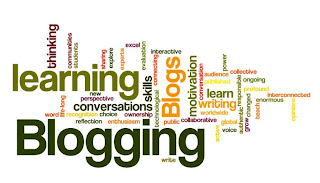Using Blogs as a Tool for Reflection in the Classroom
Blogs are reshaping our environment. They are beginning to emerge in large numbers in the educational field and offer great potential to transform learning and teaching. – Anne Davies
The History of Blogging
Justin Hall is often given credit for being one of the first people on the internet to record his thoughts in an online journal format. Although the term “blog” did not become popular until 1999, today this form of digital communication continues to grow exponentially. According to Blog Pulse, over 160 million public blogs are in existence, with almost 75, 000 being created in a single day (based on new blog stats from August 8, 2011).
Is the “everyone else is doing it” argument enough reason to bring blogging into the classroom?
Well, perhaps not.
But when blog reports help shape our current news, perhaps there is reason to sit up and take notice. In a March 12, 2011, the New York Times combined “news alerts with reports from bloggers and journalists on the ground” to provide an update on the Japanese earthquake.” Blogs are not only sharing news, they are now in the business of creating news.
In a reflection of the past 10 years of blogging, Buzz Machine’s Jeff Jarvis praises the ability of blogs to bring about “real-world change. … The public can find themselves in a dialogue with politicians and leaders that simply wasn't possible before," he said. "(Blogging is) a tool that you can use to do anything. Change the world or put up your restaurant's daily menu, and anything in between."
Blogging in Education
So, where does that leave education? Who’s blogging in schools these days?
We might better off asking, “Who’s not?”
Saskatchewan teacher, Kathy Cassidy, has been using blogging (and numerous other technologies) to engage her Grade 1 students.
I’ll let her six year old students tell you why blogging is important to these students!
Benefits of Blogging
According to Anne Davies, blogging is an “educationally sound” practice where students can begin to see the interconnectedness of knowledge rather than as a set of unrelated facts. In Learning Through Reflection, Don Clark offers a summary of research done in this area.
But this is only the beginning of the many benefits to blogging – only some of which are represented below.
In a previous post, I explored how reflection can be to assist learners as they make connections to past experiences and make sense of new learning. Blogs are a great tool for educators who are interested in creating opportunities for their students to be actively involved in their own learning process.
Teacher Tips
Using blogs for reflection requires pre-planning on the teacher’s part and is a skill that students need to develop over time.
Teacher and blogger, Colette Cassinelli shares an example of a blog assignment from her middle/high school classroom as well as some tips for getting started.
Teacher and blogger, Colette Cassinelli shares an example of a blog assignment from her middle/high school classroom as well as some tips for getting started.
She stresses the importance of teaching and modeling good blogging with students. Gina Trapani, editor of Lifehacker offers the following suggestions:
- Stay on topic.
- Contribute new information to the discussion.
- Don't comment for the sake of commenting.
- Know when to comment and when to e-mail.
- Remember that nobody likes a know-it-all.
- Make the tone of your message clear.
- Own your comment.
- Be succinct.
- Cite your sources with links or inline quoting.
- Be courteous.
For more information on blogging with links to get you started, check out Teaching Tip’s 50 Useful Blogging Tools for Teachers.
To learn more about the benefits of reflection, go to Edu Tech Wiki.



Ha! There's never enough good stuff about blogging in our world! This really is good. Love the 50 Tools link!
ReplyDelete